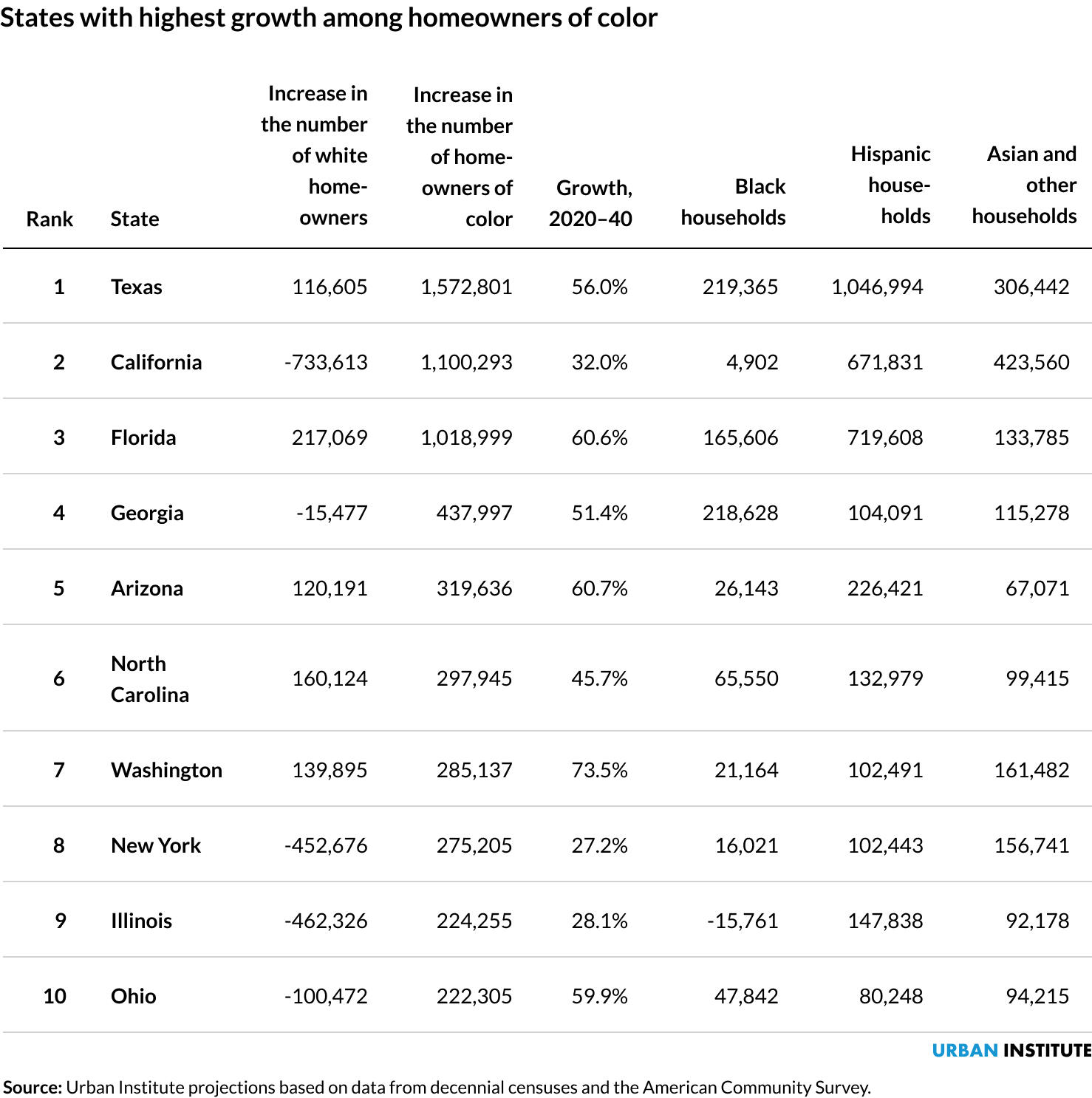Earlier this year the Urban Institute studied the changing state of homeownership in the U.S., and DS News reported on a standout stat from said study—the soaring expected rate of homeownership among the Hispanic population.
More recently, research associates Lauri Goodman and Jun Zhu reported that, while the overall number of new homeowners will increase by 6.9 million from 2020 to 2040 and that nearly all of that increase will come from households of color, the way these demographics will look by state will vary widely. Goodman and Zhu expand on the January study, breaking down their data into three sets of state-level rankings, they say, “to show what homeownership will look like in the future and the implications it could have for the housing market.”
The overall number of new homeowners will increase by 6.9 million from 2020 to 2040, “with significant variation across states,” they reported.
For starters, it is useful to understand the overall regional homeownership rates. West Virginia has the nation’s highest homeownership rate (74.2%), followed by Iowa, Vermont, Maine, Delaware, Wyoming, Minnesota, Idaho, and Michigan. The District of Columbia, New York, and California have the lowest homeownership rates.
“Unsurprisingly, the states with the lowest homeownership rates had the most expensive housing. The average cost of a home in the five states with the lowest homeownership rates in 2020 was $525,973 versus $282,290 in the five states with the highest homeownership rates.”
Into the future, the number of new homeowners is influenced by the overall number of households and the growth rate of the homeowner population, the authors noted. Thus, larger states see more growth, which lands Texas (the second-largest state with the sixth-highest growth rate) and Florida (the third-largest state with the eighth-highest growth rate) on top, expecting well over a million new homeowners from 2020 to 2040.
As for homeowners of color, a demographic that will dominate the overall growth rate (especially Hispanic buyers, as previously reported), the authors ranked the 10 states with the highest homeowner-household increase among people of color.
They found that Texas, again at the top, will experience an increase of more than 1.5 million homeowners of color. They report that 67% of the increase will come from Hispanic households, 19% from Asian and other households, and 14% from Black households (“other” households include American Indians, Alaska Natives, Native Hawaiians, other Pacific Islanders, and multiracial people).
Georgia, at No. 4, will experience a 51.4% growth rate among households of color, with 50% of the increase coming from Black households. Washington and New York will experience a significant increase in Asian and other homeowners. For these two states, 57% of the nonwhite homeowner increases will be from Asian and other families.

What this breakdown means for housing nationwide, say Goodman and Zhu, is that a one-size-fits-all policymaking approach is not the best solution.
“As federal and state policymakers tackle housing supply, affordability, ownership, and equity, they will need to remember that each state has a different starting point, factors, and trends.”
Finally, the researchers touched on the lack of inventory, especially affordable housing, and suggested Urban Institute’s state-level fact sheets, which provide detailed information about future household formation and homeownership trends, are “a great starting point” when it comes to addressing the shortage now and in the future.
“Though all states will show considerable growth in the number of homeowners of color, suggesting the need for more affordable housing, states with large increases in the total number of homeowners will face particularly acute housing supply shortages,” they concluded. “Those states will need to ensure zoning, permitting, and land-use processing will enable sufficient affordable housing production to meet the forthcoming demand.”
Credits: Christina Hughes/DSNews